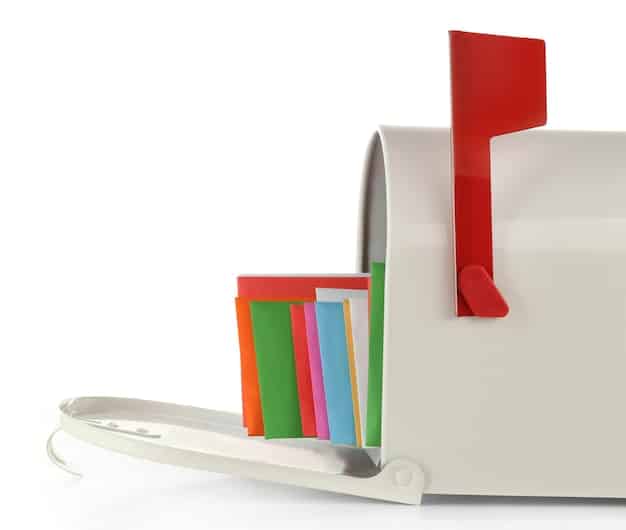Government Assistance: Applying for LIHEAP to Lower Energy Bills

LIHEAP, or the Low Income Home Energy Assistance Program, provides crucial financial aid to eligible households in the US to help manage and lower home energy costs, ensuring access to essential heating and cooling during extreme weather.
Facing high energy bills can be a significant challenge, especially for low-income households. Fortunately, the **Government Assistance for Home Energy Bills: How to Apply for LIHEAP (Low Income Home Energy Assistance Program)** offers a vital lifeline, providing financial aid to help eligible families manage their energy costs.
Understanding LIHEAP: Your Guide to Energy Assistance
LIHEAP, a federally funded program, aims to assist low-income households with their immediate energy needs. By providing financial aid for heating and cooling costs, LIHEAP ensures that vulnerable families can maintain a safe and healthy home environment, especially during harsh weather conditions.
Eligibility Requirements for LIHEAP
To qualify for LIHEAP, households generally need to meet specific income guidelines, which vary by state. Additionally, factors such as household size, energy costs, and the availability of other resources are considered. Some states also prioritize assistance to households with elderly individuals, people with disabilities, or young children.
- Income Limits: Typically, households must have incomes at or below a certain percentage of the federal poverty level.
- Household Size: Larger households may be eligible for higher benefit amounts.
- Energy Burden: The amount of energy costs relative to household income can impact eligibility.
- Residency: Applicants usually need to be residents of the state in which they are applying.
LIHEAP eligibility is not automatically granted, even if a household meets income requirements. States assess each application individually, ensuring assistance goes to those who need it most.
In conclusion, understanding the eligibility requirements for LIHEAP is the first step in accessing this crucial energy assistance program. Meeting these requirements ensures that eligible households receive the support they need to manage their energy bills effectively.
How to Apply for LIHEAP: A Step-by-Step Guide
Applying for LIHEAP involves several steps, each designed to ensure that the application process is thorough and equitable. Understanding these steps can help applicants navigate the process more smoothly and increase their chances of receiving assistance.

Gathering Necessary Documents
Before starting the application, it’s important to gather all the necessary documents. Typically, this includes proof of income (such as pay stubs or tax returns), proof of address (like a utility bill or lease agreement), social security numbers for all household members, and energy bills or statements. Having these documents ready will streamline the application process.
Finding Your Local LIHEAP Office
LIHEAP is administered at the state and local levels, so the application process and specific requirements may vary. To find your local LIHEAP office, you can visit the website of your state’s Department of Social Services or Department of Energy. You can also call the national LIHEAP hotline for assistance in locating your local office.
- Online Search: Use your state’s official website to find LIHEAP information.
- Phone Assistance: Call the national LIHEAP hotline for guidance.
- Local Resources: Check with community centers or social service agencies for local LIHEAP contacts.
Once you’ve located your local LIHEAP office and gathered the necessary documents, you’ll be well-prepared to submit your application. The application process varies by state, so be sure to follow the specific instructions provided by your local office.
In summary, the application process for LIHEAP involves gathering essential documents and locating your local office. By following these steps, applicants can efficiently navigate the process and increase their chances of receiving energy assistance.
What to Expect After Applying for LIHEAP
After submitting your LIHEAP application, it’s important to know what to expect in terms of processing times, notification procedures, and how the assistance is typically distributed. Understanding this process can help manage expectations and ensure you’re prepared for the next steps.
Processing Times and Notification
Processing times for LIHEAP applications can vary depending on the state and the volume of applications received. Typically, it may take several weeks or even months to receive a decision. Applicants are usually notified by mail or email regarding the status of their application and whether they have been approved for assistance.

How Assistance is Distributed
LIHEAP assistance is typically distributed in one of two ways: direct payments to the energy vendor or a credit applied to the household’s energy bill. In some cases, households may receive a check directly, which can then be used to pay their energy bills. The specific method of distribution may vary by state and individual circumstances.
- Direct Vendor Payments: LIHEAP funds are sent directly to the energy company.
- Bill Credits: A credit is applied to the household’s energy bill.
- Direct Payments: A check is issued to the household.
It’s important to note that LIHEAP assistance is not intended to cover the entire cost of energy bills but rather to provide a supplement to help low-income households manage their energy expenses. Understanding how assistance is distributed can help households plan their budgets accordingly.
In conclusion, knowing what to expect after applying for LIHEAP, including processing times, notification methods, and the distribution of assistance, can help applicants navigate the process more effectively and manage their energy expenses.
Maximizing Your LIHEAP Benefits
Receiving LIHEAP assistance is a significant help, but there are additional steps you can take to maximize these benefits. By implementing energy-saving strategies and exploring other available resources, you can further reduce your energy bills and enhance your home’s energy efficiency.
Energy-Saving Tips and Strategies
Adopting energy-saving behaviors and making simple improvements to your home can significantly lower your energy consumption. Some effective strategies include sealing air leaks around windows and doors, using energy-efficient light bulbs, and adjusting thermostat settings to conserve energy when you’re away from home.
Exploring Additional Resources
In addition to LIHEAP, numerous other resources are available to help low-income households manage their energy costs. These may include weatherization assistance programs, utility company programs, and community-based initiatives. Exploring these resources can provide further support and help you achieve long-term energy savings.
- Weatherization Assistance: Programs that provide energy-efficient home improvements.
- Utility Programs: Energy companies often offer programs to help customers save energy and reduce bills.
- Community Initiatives: Local organizations may offer additional resources and support.
By combining LIHEAP benefits with energy-saving strategies and additional resources, you can maximize the impact of assistance and create a more sustainable approach to managing your energy bills. Taking these proactive steps can help you achieve greater financial stability and reduce your energy burden.
In summary, maximizing your LIHEAP benefits involves implementing energy-saving strategies and exploring other available resources. By taking these steps, you can further reduce your energy bills and enhance your home’s energy efficiency.
Common Mistakes to Avoid When Applying for LIHEAP
Applying for LIHEAP can be a complex process, and it’s easy to make mistakes that could delay or even disqualify your application. Understanding these common pitfalls and taking steps to avoid them can increase your chances of receiving assistance.
Incomplete or Inaccurate Information
One of the most common mistakes is submitting an application with incomplete or inaccurate information. Be sure to carefully review all sections of the application and double-check that all information is accurate and up-to-date. Missing documents or discrepancies in the information provided can lead to delays or denials.
Missing Deadlines
LIHEAP has specific application deadlines, and missing these deadlines can result in not receiving assistance. Be sure to check the deadlines for your state and submit your application well in advance to ensure it is received on time. Late applications may not be considered for assistance.
- Review the Application: Check for completeness and accuracy.
- Submit on Time: Ensure your application is submitted before the deadline.
- Keep Records: Keep copies of all documents and correspondence.
By being aware of these common mistakes and taking proactive steps to avoid them, you can increase your chances of a successful LIHEAP application. Paying attention to detail and following all instructions can make a significant difference in the outcome.
In conclusion, avoiding common mistakes such as providing incomplete information and missing deadlines is crucial when applying for LIHEAP. By being diligent and informed, you can increase your chances of receiving the assistance you need.
LIHEAP and Other Government Assistance Programs
LIHEAP is just one of several government assistance programs designed to support low-income households. Understanding how LIHEAP interacts with other programs and how to access additional resources can provide a more comprehensive safety net for families in need.
Coordination with TANF and SNAP
LIHEAP often coordinates with other assistance programs such as Temporary Assistance for Needy Families (TANF) and the Supplemental Nutrition Assistance Program (SNAP). Eligibility for one program may sometimes streamline the application process for others. Understanding these connections can help you access a wider range of support services.
Additional Programs for Low-Income Households
Beyond LIHEAP, TANF, and SNAP, numerous other programs are available to help low-income households with various needs. These may include housing assistance, healthcare benefits, and educational support. Researching and applying for these programs can provide additional financial stability and improve overall well-being.
- Housing Assistance: Programs like Section 8 can help with rental costs.
- Healthcare Benefits: Medicaid and CHIP provide healthcare coverage for low-income individuals and families.
- Educational Support: Programs like Pell Grants can help with college expenses.
By exploring the full range of available government assistance programs and understanding how they can work together, you can create a more robust support system for your household. Accessing these resources can provide greater financial security and improved quality of life.
In summary, understanding how LIHEAP interacts with other government assistance programs and exploring additional resources can provide a more comprehensive safety net for low-income households. Accessing these programs can improve financial stability and overall well-being.
| Key Point | Brief Description |
|---|---|
| 🏡 LIHEAP Overview | Federal program assisting low-income households with energy bills. |
| 📝 Application Process | Gather documents, locate local office, and submit application. |
| 💡 Maximizing Benefits | Use energy-saving strategies and explore other resources. |
| ⚠️ Avoiding Mistakes | Provide accurate info and meet deadlines for a smoother application. |
Frequently Asked Questions About LIHEAP
▼
LIHEAP aims to assist low-income households with their immediate energy needs, providing financial aid for heating and cooling costs. It ensures vulnerable families can maintain a safe home environment.
▼
You can find your local LIHEAP office by visiting your state’s Department of Social Services or Department of Energy website. You can also call the national LIHEAP hotline for assistance.
▼
Typically, you’ll need proof of income, proof of address, social security numbers for all household members, and energy bills or statements to apply for LIHEAP.
▼
LIHEAP assistance is usually distributed through direct payments to the energy vendor or as a credit applied to the household’s energy bill. In some cases, direct checks may be issued.
▼
Yes, LIHEAP often coordinates with other assistance programs like TANF and SNAP. Eligibility for one program may sometimes streamline the application process for others, offering a comprehensive support system.
Conclusion
Navigating the process of applying for and maximizing government assistance for home energy bills, particularly through programs like LIHEAP, can provide vital support for low-income households. By understanding eligibility requirements, the application process, and strategies to maximize benefits, families can effectively manage their energy costs and ensure a safe, comfortable home environment.





